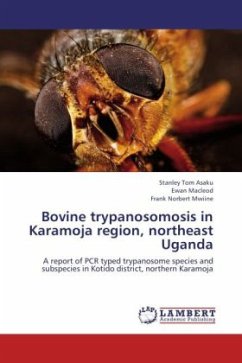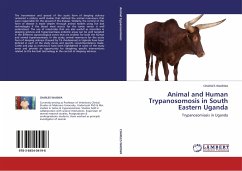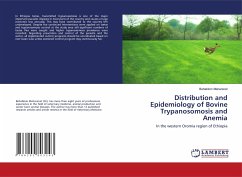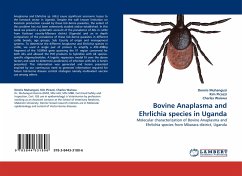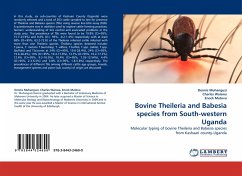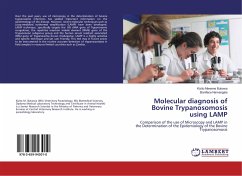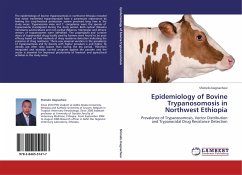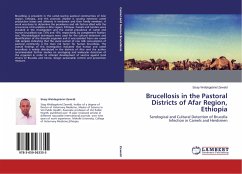This cross-sectional study provides the first evidence on trypanosome species and subspecies in cattle from Karamoja region, northeast Uganda. In a preliminary survey conducted in May 2011, a total of 706 indigenous cattle from seven communal herds were sampled to detect presence of trypanosomes using micro-haematocrit buffy coat, thick film and thin smear film techniques. The overall herds prevalence of trypanosomosis was found to be 5.2% (37/706); 11.5% (9/78) in Lokona kraal, 11.0% (15/137) in Lotanyet and 5.9% (13/220) in Natuket, while the other four communal kraals were aparasitaemic. These parasitological results informed second phase sampling design, in which 199 whole blood samples were collected and preserved on FTA® cards for molecular typing. Trypanosoma vivax dominated with a prevalence of 21.1% (42/199) by ITS-PCR, followed by Trypanozoon 15.6% (31/199) by ITS/TBR-PCRs, T. congolense Savannah 1.5% (3/199) and T. simiae 0.5% (1/199). None of the samples amplified forT. godfreyi, and T. congolense Kilifi and Forest subtypes. Only one sample had triple infection with T. vivax, T. congolense Savannah and Trypanozoon, compared to 3.5% (7/199) double infection rate.
Bitte wählen Sie Ihr Anliegen aus.
Rechnungen
Retourenschein anfordern
Bestellstatus
Storno

